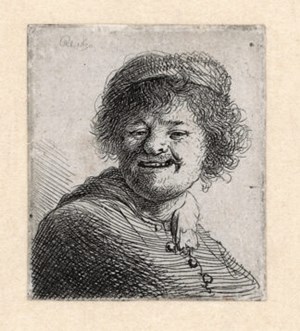
Directed by Rembrandt, which opens at the Rembrandt House Museum in Amsterdam and runs until May 26, aims to shed a new light on how 17th century painters and theatre-makers inspired one another.
Milou Halbesma, director of the Rembrandt House, said that this museum where Rembrandt once lived, worked, taught and sold his work, can only truly understand his works in a historic context of popular theatre. “This is a story about Rembrandt as a director in a way, as a director of film and of theatre, and I always wonder what Rembrandt would have done in these days,” she said. “You start to see more and more that every painting is the start of a story.”
The exhibition, which includes interactive elements and multimedia screens, shows how Rembrandt sketched and attended the earliest forms of theatre in the Netherlands. There were travelling fairs where troupes from England, France and Italy would perform, largely through gestures, dramatic plays brought by Spanish and Portuguese Jewish refugees to Amsterdam, and the plays of the crowd-pleasing new Schouwburg theatre in Amsterdam – now destroyed, although its gateway remains at The Dylan hotel on the Keizersgracht.
“Painters and the theatre are sister crafts which both employ the same kinds of storytelling techniques,” said Leonore van Sloten, senior curator, at a press launch. “First, we go with Rembrandt through the streets, to see all kinds of street theatre he would have seen.”
Rembrandt’s famous sketches and etchings show street characters, for example, a “quacksalver” healer whose remedies were mostly theatrics, musicians and Italian travelling troupes performing funny set pieces based around caricatures like the miser Capitano, from the Commedia dell-arte theatre form. It is likely, said van Sloten, that Rembrandt would have learned about ancient theatre at his classical school, and he also employed well-known state gestures, such as an outstretched hand signifying the truth.
Some of his studies showing his own face in different expressions suggest his fascination with storytelling and acting and Rembrandt sketched, attended and even created artwork for shows at the Schouwburg, which operated twice a week and featured female actors from 1655. The exhibition draws from new research in Amsterdam city archives going behind the scenes of early theatre, which will feature in a Stadsarchief show from March 2 until May 26.
These experiences of theatre, the Rembrandt House argues, deeply inspired the artist’s composition skills and rendering of characters: later, the show explains, he would stage dramatic moments in stories, often choosing a point of tension just before the critical action.
In Rembrandt’s Susanna, on loan from the Mauritshuis, the woman interrupted at bathing is fixed staring at the audience as though they could be accomplices to the rape that will follow. In Potiphar’s Wife Accuses Joseph, on loan from the Staatliche Museen zu Berlin, Potiphar’s wife’s hand gesture suggests truth at the moment that she lies about her affair with Joseph, who is is also put in scene for dramatic effect.
Even Rembrandt’s famous chiaroscuro technique, of light and dark, the show implies, could well have been inspired by the growing sophistication of 17th century theatre and awareness of lighting.
“The art of painting is a still art but in paintings like the Night Watch, Rembrandt does everything he can to suggest movement,” added van Sloten. “These are living actors, in a frieze, and these sorts of images would have been in the heads of Amsterdammers who would have looked at Rembrandt’s paintings…But Rembrandt also put himself inside the skin of his characters, full of emotion, painting as though he could also make sound.”
Main Image :Rembrandt, self portrait, study of laughter, 1630. Rembrandthuis.

ArtDependence Magazine is an international magazine covering all spheres of contemporary art, as well as modern and classical art.
ArtDependence features the latest art news, highlighting interviews with today’s most influential artists, galleries, curators, collectors, fair directors and individuals at the axis of the arts.
The magazine also covers series of articles and reviews on critical art events, new publications and other foremost happenings in the art world.
If you would like to submit events or editorial content to ArtDependence Magazine, please feel free to reach the magazine via the contact page.